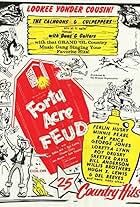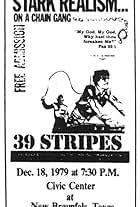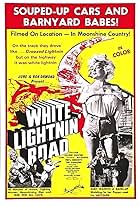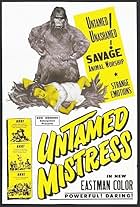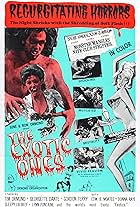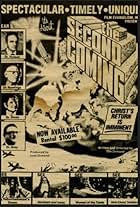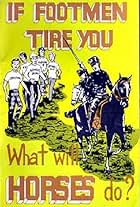Prison convict Earl "Snake" Richards seeks stashed stolen cash in a small tobacco town and ends up falling for the preacher's pretty daughter.Prison convict Earl "Snake" Richards seeks stashed stolen cash in a small tobacco town and ends up falling for the preacher's pretty daughter.Prison convict Earl "Snake" Richards seeks stashed stolen cash in a small tobacco town and ends up falling for the preacher's pretty daughter.
Photos
Ron Ormond
- Crime Boss
- (as Vic Naro)
- Director
- Writers
- All cast & crew
- Production, box office & more at IMDbPro
Storyline
Did you know
- SoundtracksWill the Circle Be Unbroken?
Lyrics by Ada R. Habershon
Music by Charles H. Gabriel
Performed by Rita Faye
Featured review
"The Girl from Tobacco Row" is one of the strangest low-budget films I've ever seen. While it's far from a good film, it is strangely entertaining and a curio that might be of interest to music historians and sociologists.
The film begins with a bunch of prisoners escaping from a road gang (note to readers: in some parts of the US, mostly non-violent prisoners are used for road crews to cut weeds, dig ditches and the like). Before this occurs, however, one of the prisoners tells the other where he's hidden some stolen loot. Not surprisingly, this prisoner with the loot is killed in the escape. His friend, 'Snake' Richards (played, interestingly by 'Snake' Richards!) manages to escape and you assume he'll soon go looking for the money. And, incidentally, a gang leader (Tex Ritter*) assumes that someone will come looking for the money--and he and his gang will wait to catch him and take the money for themselves.
In between the escape and the big confrontation is a lot of film--and very little plot. Snake is taken in by a preacher and his family and they welcome him--and they go to a lot of church services. Not surprisingly, Snake is torn between choosing between good (hard work and honesty) and evil (running off with stolen funds). Which path will Snake take?
As I said, though, there was very little plot and dialog. Mostly, the film consisted of one song after another after another. It honestly looks as if the filmmaker Ron Ormond went into the Tennessee countryside and rounded up all the local non-professional acts that he could and then put them on film. Some of it made some sense---such as the gospel and country music singers. But, there were also some odd acts including one group that did a rendition of "The Battle Hymn of the Republic"** and another that did a harmonica version of the Rimsky-Korsokov song "Flight of the Bumblebee"! The acts weren't bad--just odd. And, it's very obvious that they were recorded in some studio and then pretended to perform on film.
So is it any good? Not particularly. But, considering almost everyone you see in the film are non-actors, it's not bad either.
*Tex Ritter is an odd addition to the film. While he's billed first, he's really just a supporting character. Top billing was done because he was a singing cowboy movie star from the 1940s.
**Non-Americans might not know this, but "The Battle Hymn of the Republic" is a song strongly associated with the North during the Civil War. So, hearing these Southern folk performing this song was very surprising--especially back in the 1960s when sentiments in the South were decidedly less pro-North than they are today.
The film begins with a bunch of prisoners escaping from a road gang (note to readers: in some parts of the US, mostly non-violent prisoners are used for road crews to cut weeds, dig ditches and the like). Before this occurs, however, one of the prisoners tells the other where he's hidden some stolen loot. Not surprisingly, this prisoner with the loot is killed in the escape. His friend, 'Snake' Richards (played, interestingly by 'Snake' Richards!) manages to escape and you assume he'll soon go looking for the money. And, incidentally, a gang leader (Tex Ritter*) assumes that someone will come looking for the money--and he and his gang will wait to catch him and take the money for themselves.
In between the escape and the big confrontation is a lot of film--and very little plot. Snake is taken in by a preacher and his family and they welcome him--and they go to a lot of church services. Not surprisingly, Snake is torn between choosing between good (hard work and honesty) and evil (running off with stolen funds). Which path will Snake take?
As I said, though, there was very little plot and dialog. Mostly, the film consisted of one song after another after another. It honestly looks as if the filmmaker Ron Ormond went into the Tennessee countryside and rounded up all the local non-professional acts that he could and then put them on film. Some of it made some sense---such as the gospel and country music singers. But, there were also some odd acts including one group that did a rendition of "The Battle Hymn of the Republic"** and another that did a harmonica version of the Rimsky-Korsokov song "Flight of the Bumblebee"! The acts weren't bad--just odd. And, it's very obvious that they were recorded in some studio and then pretended to perform on film.
So is it any good? Not particularly. But, considering almost everyone you see in the film are non-actors, it's not bad either.
*Tex Ritter is an odd addition to the film. While he's billed first, he's really just a supporting character. Top billing was done because he was a singing cowboy movie star from the 1940s.
**Non-Americans might not know this, but "The Battle Hymn of the Republic" is a song strongly associated with the North during the Civil War. So, hearing these Southern folk performing this song was very surprising--especially back in the 1960s when sentiments in the South were decidedly less pro-North than they are today.
- planktonrules
- Jul 11, 2014
- Permalink
Details
Contribute to this page
Suggest an edit or add missing content

Top Gap
By what name was Girl from Tobacco Row (1966) officially released in Canada in English?
Answer




